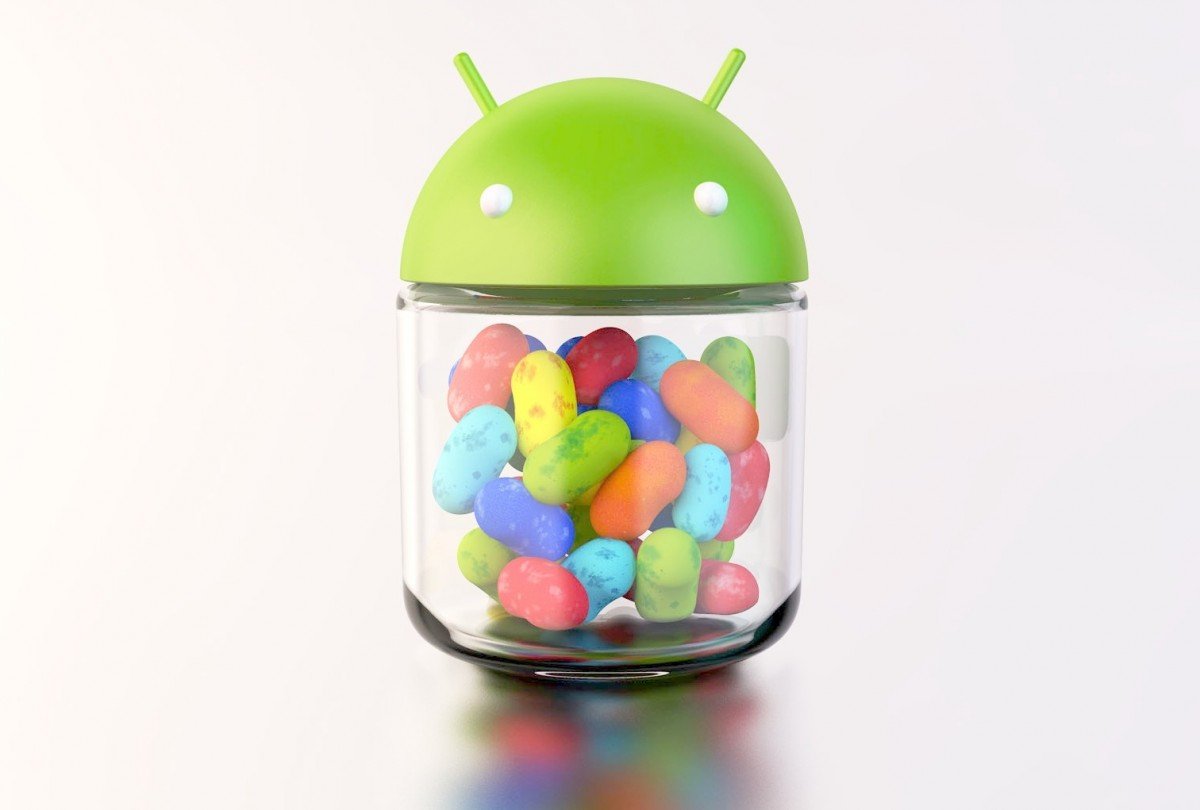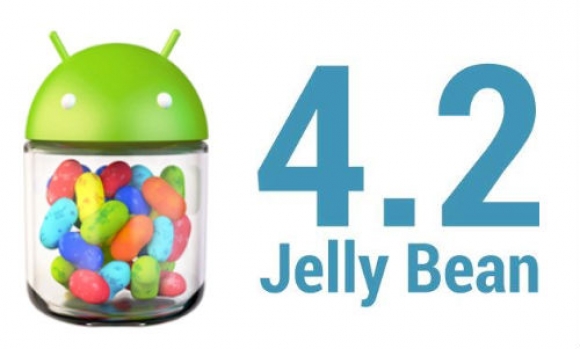One of the most popular Android device Samsung Galaxy Note 2 (GT-N7100) model – international variant has received the latest Android 4.3 Jelly Bean update N7100XXUENB2.
Unfortunately, for the moment only Galaxy Note 2 users from Thailand can download and install the new firmware via OTA (Over the Air) or by using the official Samsung KIES application. The new update is pushed out in phases, and that means it needs some time when it will be used for all customers..
This step by step guide is especially provided for all users who want to use a manual method to install the new Android 4.3 N7100XXUENB2 Jelly Bean for Samsung Galaxy Note 2 (GT-N7100) model.
On the other hand, if you have not received a automatically OTA notification on your device’s panel notification or you don’t want to wait for this official release, you can follow this step by step tutorial to apply it
The new update provides more stability and security for your device, it comes with numerous new features such as Galaxy S4 like lockscreen, Tabbed UI in Settings, New Samsung keyboard, Smoother TouchWiz, New S-Voice from Samsung Galaxy S4 and more.
How To Download Jelly Bean For Android Phones
Prerequisites:
Download Jelly Bean skin pack for Windows 7 from here Double click on installation file ‘JellyBeanSkinPack4.0-X86.exe (depending on the version and your system filename might be different). On the next screen, it will ask you to install babylon toolbar and other option. Restart your Nexus, and after a couple of minutes head over to Settings - About Phone - System Updates. Now, tap the Refresh button and hope that the OTA update file is already present on the server your phone is connecting to. If all goes well, your Nexus device from Google must be downloading the OTA update to Android 4.3 Jelly Bean. Sep 25, 2012 It didn’t take long for the Android community to root the new Android 4.1 Jelly Bean operating system. While the update still hasn’t rolled out to most phones yet, a member of the XDA-Developers forum named Bin4ry has released a small script which is able to root “nearly all” devices running Ice Cream Sandwich and Jelly Bean. Nov 01, 2013 Download Quickoffice. Download Google Keep. Clock & Keyboard. The new Clock app comes with an interface revamp that takes away all those bold colors that we saw in Android 4.3 Jelly Bean. The Keyboard has also been improved, and now ships with. Jul 28, 2013 How to Install Flash Player for Android The first thing you need to do is that you have to download a browser which will support Adobe Flash Player. Google Chrome and Opera Mini browsers do not support Adobe Flash Player so I recommend you to download Firefox Web browser or perhaps Dolphin web browser.
- Remember that this present new firmware is unofficial one and it can be used and installed on Samsung Galaxy Note 2 GT-N7100 model.
- This guide is provided for educational purpose and we, at the Android Source team cannot be held liable or responsible for any data lost or damage to your device if you decide to apply this guide. Use this step by step guide on your own risk only.
- Download and install the suitable USB Drivers for Samsung Galaxy Note 2 GT-N7100 device on the PC.
- Ensure that the USB Debugging Mode is enabled on the device: Settings>Developer Options.
- Now, be sure to take a a full backup for all your important data
- This guide works for factory unlocked devices (not locked to any specific carrier).
- Ensure that the Samsung Galaxy Note 2 device’s battery has more that 85 % power left.
- The new Android 4.3 Jelly Bean (N7100XXUENB2) OS works and is compatible with Samsung Galaxy Note 2 (GT-N7100) model only. Do not flash this firmware for any other incorrect variants or devices as it may damage your device.
- The model number can be found by navigating on the Galaxy Note menu via Settings>About Phone.
How to install official 4.3 N7100XXUENB2 Jelly Bean on Galaxy Note 2 device.
- Download Android 4.3 Jelly Bean official firmware (N7100XXUENB2) or Here and save it in your PC.
- Now, download Odin v3.09 from here and save it in your PC.
- Extract the downloaded Android 4.3 firmware zip file by using 7-Zip app to get a .tar.md5 file and some other additional files.
- Extract ODIN zip file to get Odin3 v3.09.exe and some other additional files.
- Power off the Samsung Galaxy Note 2 device completely.
- Boot the device into Download Mode (Press Volume Down, Home and Power buttons simultaneous until an Android robot draw together with a warning triangle will be displayed on the device’s screen and then press Volume UP button to enter in Download Mode).
- Open ODIN application as an Administrator on your PC.
- Now, connect the Samsung Galaxy Note 2 to the PC by using the USB cable while the device is in Download Mode.
- Wait until the ODIN application detects the Note 2 device and will show you the “Added” message on the screen and the ID:COM bow will return a light blue color together with the COM port number. Note: if the “Added” message rejects to be displayed then you need to reinstall the USB drivers once again.
- Next, in ODIN application click on AP button and browse and pick up the firmware file N7100XXDLJ5_N7100ODDDLI7_INU.tar.md5.
- Important: In ODIN select the Auto Reboot and F. Reset Time checkboxes and leave the Re-Partition option unchecked.
- Verify once again all the steps and when are done correct move to the next step.
- Press the Start button in ODIN to start the flashing process.
- Now, wait for firmware installation process to be done, and the “PASS” message with green background is displayed in ODIN application’s interface.
- Samsung Galaxy Note 2 device will take a reboot, and the Home screen will appear.
- Disconnect the device from the PC by removing the USB cable from the computer.

These where all the steps to install the new official N7100XXUENB2 Android 4.3 Jelly Bean firmware on Samsung Galaxy Note 2 device.
Verify the new firmware version from Settings>About Phone on the Note 2 device.
Google has released Android 4.3 Jelly Bean with some minor feature additions and more bug fixes. Android 4.2 users wont find much difference when they upgraded to 4.3 Jelly Bean, but the responsiveness and Bluetooth smart feature to save battery when your device connected to Bluetooth devices are some important notable chances. Also for game developers and tablet users who install android 4.3 will now get better parental control options by creating and managing users profiles. Check out the top 5 android 4.3 jelly bean features in our recent article.
We have a good collection of android tutorials and you can browse them from the search box above. You may also like to read how to install android os on pc and install android ics on pc which we wrote long ago and that still works well for previous versions of android. Now here we have the latest one, which is Android 4.3 Jelly Bean for PC.
Download the android iso file and begin the process to install and run android os on your PC today.
Also Read, mSpy Review and 15% mSpy Coupon Code Discount, Best Spy App for Android and iPhone.
How to Install Android 4.3 Jelly Bean on PC
Step 1: Go To Android-x86 and you can see Android 4.3 live installation ISO file in the top of the page. Click that link to download the ISO file. Now you need a USB drive to install Android in your PC. Make sure that portable device doesn’t have any other files and it is completely formatted. The Android ISO file will come around 200 MB, so USB drive with 1 GB of memory space is enough for the installation.
Step 2: To convert your USB drive into a bootable device, you need to download UNetbootin and install it in your Computer. It is available for Mac, Windows and Linux. You can choose your operating system in the download page. If you are using Linux, you can also choose your distribution in the same page.
Step 3: UNetbootin is a simple application, the file size is less than 5 MB. Once you complete the installation you can see a window as shown in screenshot above. If you are Linux user, you need to select your distribution and the version of your OS. After selecting the distribution, now locate your USB drive in the bottom of the window and click “OK” to extract the file.

Step 4: For Mac and Windows users, just locate and mount the ISO file. Then select your USB drive and click “OK” to extract the file. Now your USB drive is bootable and ready for Android 4.3 installation.
Step 5: Insert USB drive in the PC you need to install and restart it. Now you have to the change the BIOS boot order. Go to Boot Menu in the BIOS settings and change the boot priority from “Hard Disk” to “Removable Disc”. Again restart your PC to start the installation. Once you restart the computer, it will automatically boot from your Removable Disc and take you to the installation page.
Step 6: If you have used Linux Live CD before to install any Operating System, then this Android installation page will look familiar to you. Just like other Linux Live CD installations, you can either start using the OS without installation or install it in your hard disk. For using it without installation, select the first option and start using the OS.
Only drawback in this method is, all your data will be deleted when you shutdown and leave the system. If you just want to make a try, you can use this option.
Step 7: So, to start installation in your hard disk, you have to choose the 4th option. As soon as you selected that, you will get a window as shown in the screenshot above, where you need to allocate RAM Memory and Hard Disk Storage. For this Android OS, 256 MB of RAM is enough. Use “New” on the bottom menu to allocate memory for RAM and Hard Disk. Here I’ve allocated 1 GB of RAM and 10 GB for hard disk storage.
Step 8: After allocating your memory for both, the installation will start automatically. The installation time will vary based on your hardware (CPU, RAM). Hardly it will take around 5 to 10 minutes. In the mean time you can sit back and enjoy a cup of coffee.
Step 9: Once installation is complete, you will get a welcome page as shown in the screenshot below. Choose your preferred language and click on “Start” button to configure the settings in First Boot.
Step 10: Once you selected the language and clicked on Start button, it will take you to the Android home page. Then rest of the things are usual. You can go to the menu, configure your Play Store account, install apps, browser internet, etc.
How To Download Jelly Bean For Android Free
That is all, now its time to enjoy your fresh and amazing looking Android OS on your PC. We believe this simple and easy to follow android tutorial helped you to configure the Google Android latest release on your Computer. Thanks for reading and you may now share this post with your friends and followers across social network sites. Have a wonderful and productive day !